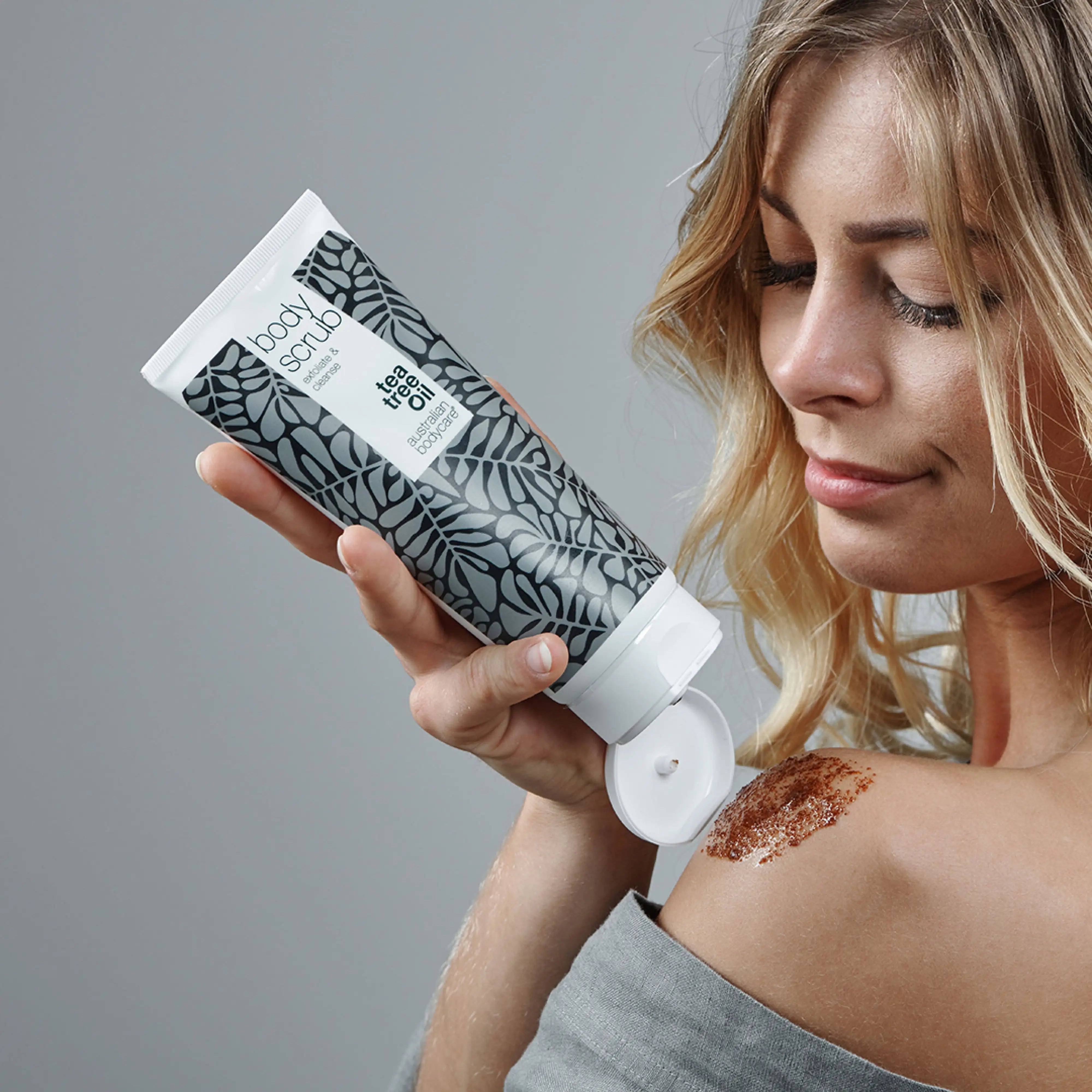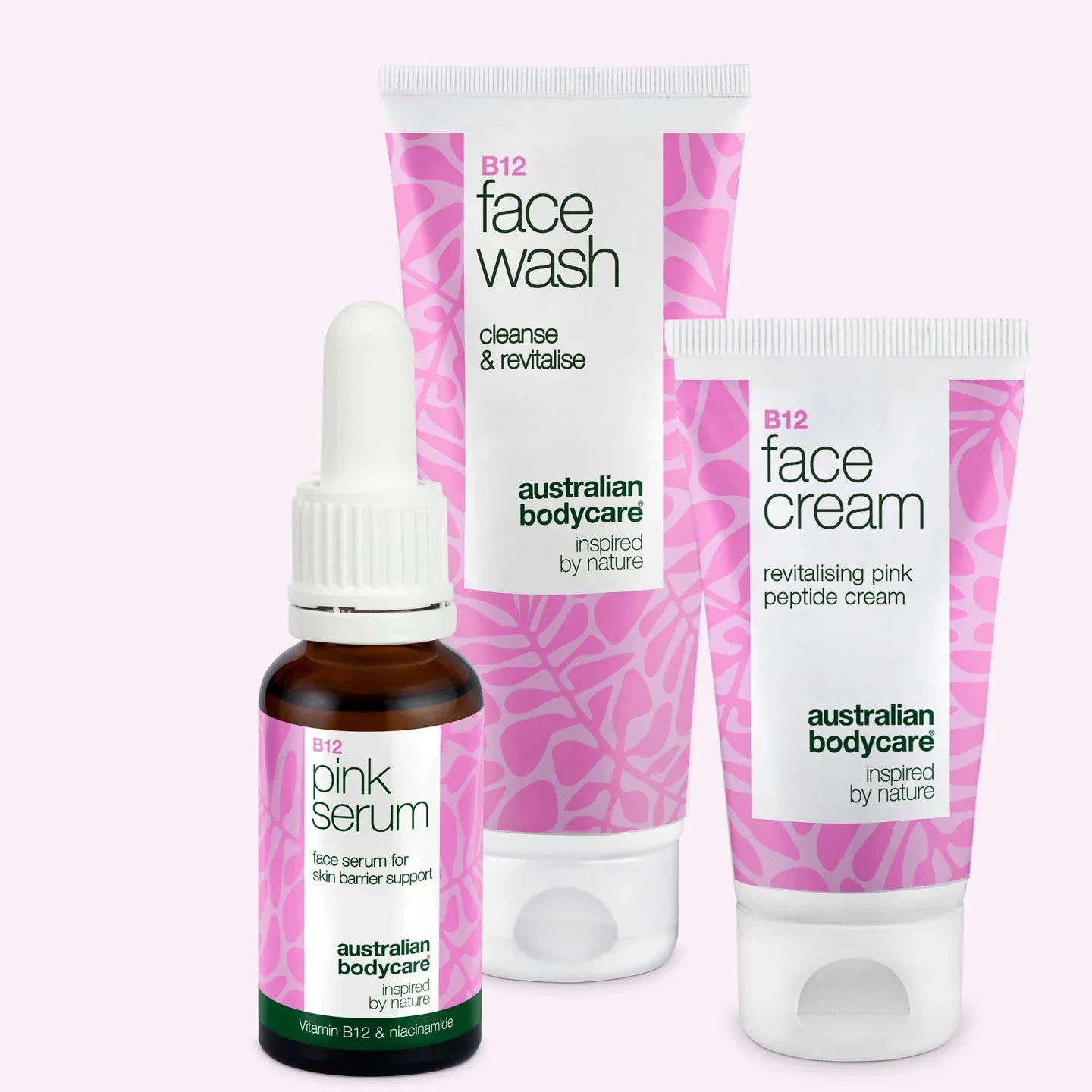Sun rash – treatment and prevention
Sun rash is a troublesome form of eczema in people who are highly sensitive to the rays of the sun. If they spend just a short time in the sun, it can cause eruption of a sun rash, also called sun allergy or polymorphous light eruption (PMLE). The best way to avoid sun rash is to use a sun cream with a high protective factor, in generous quantities.
Most people can tolerate moderate amounts of sun, although too much causes sunburn. For those who are oversensitive to the rays of the sun, and therefore do not tolerate it, a sun rash may be triggered by just a short time out in the sun.
Sun rash is an uncomfortable skin condition, and very troublesome for those who are affected.
Table of contents
What does sun rash look like?
Sun rash often appears as a red, severely itching rash consisting of small spots and sometimes small, pale blisters. The rash usually appears a couple of hours after exposure to the sun, but may appear up to two days later.
Jump to: Sun rash treatment – What to do
The symptoms normally clear up after a few days, if the skin is not exposed to any more sun.
Sun rash is seen most often in the spring or early summer, when the skin is not used to the sun’s rays.
For those with only mild forms of sun rash, it will get better during the summer, as the skin gradually becomes more used to the sun. Usually, it will return again the next spring. However, most people finally stop getting sun rash, because the skin becomes more robust.
Read this too: What are the symptoms? What sun rash looks like
Sun rash itches
Sun rash is not a dangerous condition, but it is a kind of allergic reaction to the sun’s UV radiation. But what does it feel like? The skin is red and granulated, and sun rash is often accompanied by a severe itch. That is why sun rash is extremely troublesome, even though it is not dangerous.
It can be difficult to manage the persistent itch, but since the skin is irritated, it is rarely a good idea to scratch. Still, it is difficult not to scratch, when the itch is so severe. You can try to cool and soothe the itching skin with a moisturising body lotion or aloe vera gel, which helps to calm the skin. You can get help at the pharmacy to find a cream for sun rash with an antihistamine, which can relieve the allergic reaction, and will therefore stop the itch.
Polymorphic light eruption
Sun rash is sometimes known as polymorphic light eruption or photodermatitis, and also has common names such as sun allergy, sun poisoning or Mallorca acne.
The symptoms can be similar to the symptoms of heat rash, but while sun rash does not disappear when the skin is cooled down, heat rash will typically clear up as soon as you are cooler.
Treatment for sun rash – what is the best thing to do?
The first thing to do is to get away from the sunlight.
Treatment for sun rash consists of skin care and moisturising.
The eczema or rash is an allergic reaction. This means the skin is hot and red, possibly slightly puffy, and there is a really maddening itch. It helps, therefore, to use something cooling and soothing on the skin, that relieves the itch.
You can use after-sun cream or an ordinary body lotion. The most important thing is to give the skin lots of moisture, so that it does not dry out.
If you choose to treat your sun rash with a cream containing aloe vera and tea tree oil, it is not only a moisturiser, but also a remedy that effectively relieves the itching, while it soothes and cools the skin and keeps it healthy.
In severe cases of sun rash you may need a sun rash cream with antihistamines or a mild cortisone cream to treat them. Both can be bought over the counter.
You can consult a doctor if you want to be quite certain that you have sun rash, and learn more about what you can do about it.
While getting sunburnt is definitely not good for you, it might be some consolation that fortunately, sun rash is not dangerous. If you have sun rash, it does not mean there is a greater risk of melanoma or skin cancer. But it is very uncomfortable and bothersome to suffer from a sun rash – there is no doubt of that.
Treatment for sun rash on the face
People with a very fair skin type are especially likely to get a rash on the face, like spots, in the spring and summer. Because of the spotty appearance, it is sometimes called Mallorca acne or summer acne. The rash may extend down the neck and over the upper part of the chest.
The best way to treat sun rash on the face is to stay out of direct sunlight. The rash or summer acne erupts as a result of exposure to the sun. When you are no longer exposed to the sun’s ultraviolet rays, the skin condition will gradually clear up by itself. If you cannot avoid the sun, you should use a high-factor sun cream that can filter out most of the sun’s UVA and UVB radiation. In addition, you can wear a cap or wide-brimmed hat to shade your face from the sun.
In some cases you can have light treatment with ultraviolet light every week, which is intended to make the skin more robust, so the face is better able to tolerate the sun’s rays when the spring comes.
Tablets to strengthen the skin
If you have sun rash every year, it may be a good idea to help your skin from inside. A variety of dietary supplements are available to help the skin prepare for the sun’s rays, so it is better able to withstand exposure to the sun. However, this does not mean that you can drop your sun cream, as the treatment is only a supplement to strengthen your skin from inside.
A combination of beta-carotene, calcium and thistle oil can ward off sun rash before it develops. You need to start taking the dietary supplement six to nine weeks before you are exposed to the sun – and keep taking the supplement throughout the sunny season.
Beta-carotene is a precursor of vitamin A, which renovates the cells and protects against the sun. When the skin is exposed to sunlight, the body makes vitamin D. In some people, however, vitamin D binds calcium in the blood, so the skin tissue lacks calcium instead. Thistle oil contains large amounts of vitamin E – an antioxidant which protects skin cells from the harmful effects of the sun.
You should always get advice from your doctor if you are in doubt about dietary supplements to strengthen your skin.
Cream for sun rash
The most important cream for sun rash is, first and foremost, sun cream. If you have a sun cream with a sufficiently high factor, you can keep the painful rash away. If you have very fair skin, it is best to use a sun cream with a factor of 50, which can block up to 98 % of the sun’s rays. It is important, however, to spread enough sun cream on the skin exposed to the sun, and also to spread it evenly.
If you are unlucky and have already got a sun rash, you can use a aloe vera gel with Tea Tree Oil, which will relieve the itching and irritation. At the pharmacy you can also find a cream with antihistamines or cortisone, which will effectively prevent the allergic reaction. Antihistamines reduce the histamine in the body – this is the substance formed in allergic reactions such as sun rash.





